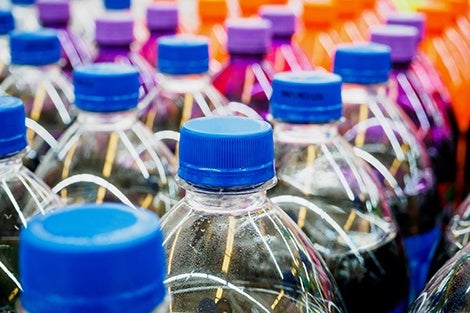For immediate release: November 14, 2017
Boston, MA – Consumption of sodas and other sugar-sweetened beverages (SSBs) fell for both children and adults between 2003 and 2014, according to a new study led by researchers from Harvard T.H. Chan School of Public Health. But despite this positive trend, the researchers found, consumption remains high among adolescents and young adults, and is particularly high among black, Mexican American, and non-Mexican Hispanic populations.
“SSBs are a leading source of added sugar to the diet for adults and children in the U.S. and their consumption is strongly linked to obesity,” said first author Sara Bleich, professor of public health policy. “Understanding which groups are most likely to consume SSBs is critical for the development of effective approaches to reduce SSB consumption.”
The study was published online November 14, 2017 in Obesity. It is the first paper to present the most recent national data on beverage consumption from the Nutrition Examination Survey (NHANES), which is the gold standard for understanding consumption trends and patterns at a national level.
Bleich and her colleagues examined data collected from 18,600 children aged 2 to 19, and 27,652 adults aged 20 or older, in the NHANES 2003-2014. Participants were asked about their consumption of seven different beverage types in the previous 24 hours: SSBs, 100% juice, diet beverages, milk (including flavored milk), unsweetened coffee or tea, alcohol, and water.
The researchers found that overall beverage and SSB consumption declined for children and adults between 2003 and 2014. In 2013-2014, 60.7% of children and 50.0% of adults reported drinking SSBs on a given day; in 2003-2004, 79.7% of children and 61.5% of adults reported drinking SSBs. However, adolescents and young adults still consumed more than the recommended limit for added sugar set by the 2015-2020 Dietary Guidelines for Americans.
While white adults experienced declines in SSB consumption across almost all age groups, there were few other significant changes for other racial and ethnic groups. SSB consumption remained highest among black, Mexican American, and non-Mexican Hispanic adolescents—groups at higher risk for obesity and type 2 diabetes.
Higher consumption of milk (compared to SSBs) among younger children and an increasing percentage of water drinkers among children and adults were two notable positive trends.
The increase in water consumption was a positive surprise, Bleich said. “This suggests that messages about drinking non-calorie beverages are having an effect.”
Other Harvard Chan School authors included Kelsey Vercammen and Zhonghe Li.
“Trends in Beverage Consumption among Children and Adults, 2003-2014,” Sara N. Bleich, Kelsey A. Vercammen, Jonathan Wyatt Koma, and Zhonghe Li, Obesity, online November 14, 2017, doi: 10.1002/oby.22056
Visit the Harvard Chan School website for the latest news, press releases, and multimedia offerings.
###
For more information:
Marge Dwyer
617.432.8416
mhdwyer@hsph.harvard.edu
photo: iStockphoto.com
Harvard T.H. Chan School of Public Health brings together dedicated experts from many disciplines to educate new generations of global health leaders and produce powerful ideas that improve the lives and health of people everywhere. As a community of leading scientists, educators, and students, we work together to take innovative ideas from the laboratory to people’s lives—not only making scientific breakthroughs, but also working to change individual behaviors, public policies, and health care practices. Each year, more than 400 faculty members at Harvard Chan School teach 1,000-plus full-time students from around the world and train thousands more through online and executive education courses. Founded in 1913 as the Harvard-MIT School of Health Officers, the School is recognized as America’s oldest professional training program in public health.
